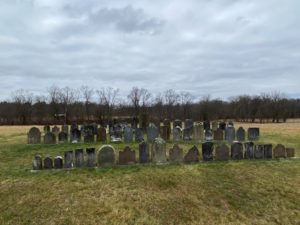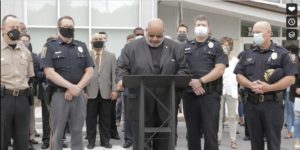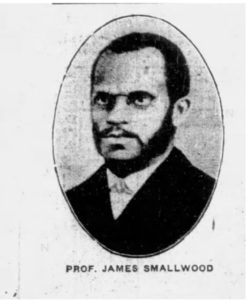The way York surrendered in Civil War brought controversy
The Surrender House
21 Locust Lane, Thomasville
The situation
York County’s Scott Mingus has written about 35 books detailing the Civil War era, about half of them touching in full or in part on York County’s role in the Civil War. In co-writing his best-selling “If We Are Striking for Pennsylvania,” he surveyed how towns in the Confederate path in movements that led to the Battle of Gettysburg reacted to their gray-clad invaders. In this guest column, he writes how the decisions by York’s leaders differed from other towns. He has written at least two other guest columns in Witnessing York: Unsung York County Civil War sites to visit – Witnessing York and Home site of first-known shooting of freedom seeker – Witnessing York
+++
Arthur Briggs Farquhar was a man of action and decisiveness, traits that would lead him to great wealth, prestige, and power over the course of his lifetime. Those characteristics were evident on the morning of Saturday, June 27, 1863, in the Civil War. Reports reached York that Confederate forces were headed east from Gettysburg and would likely reach the town that evening, or perhaps early on Sunday morning. York’s leaders had previously formed a Committee of Safety entrusted with protecting the town. After some debate, Farquhar, then 24 years old, volunteered to ride out to find the oncoming Rebels and negotiate the terms of an enemy occupation. He had been part of a volunteer cavalry company that trotted down to his native Maryland in September 1862 to seek information on Confederate intentions.
When everyone else turned back, he rode forward and met Gen. Robert E. Lee’s nephew, an old acquaintance, to ensure that his property was not in danger. He said in his memoir “The First Million The Hardest” that he received the personal thanks of Pennsylvania Governor Andrew Curtin for his actions.
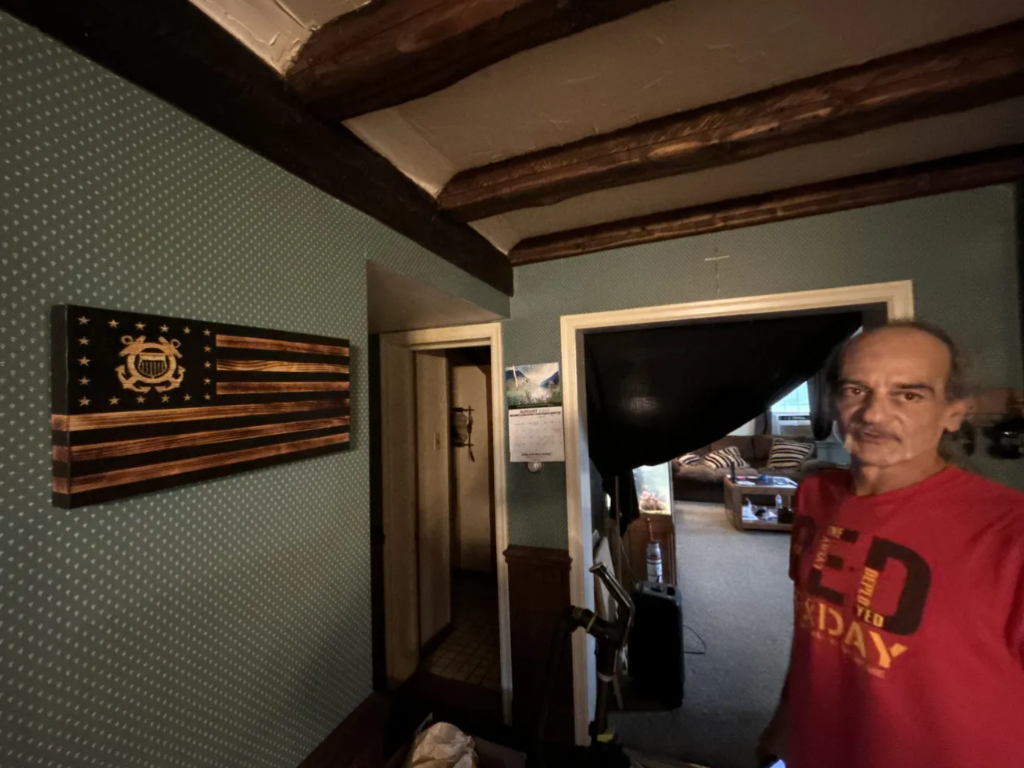
Now, as the June 1863 invasion progressed, Farquhar decided to duplicate that bold initiative. Without authorization, he reached the Rebel lines just west of Abbottstown and met with Gen. John B. Gordon of Georgia. After receiving written assurances of protection for York, he returned to the borough and met with military and civic leaders. The Committee of Safety passed a resolution declaring “That, finding our town defenseless, we request the Chief Burgess to surrender the town peaceably.”
Chief Burgess David Small and three committee members climbed into Farquhar’s buggy. Someone attached a white flag and off they went westward along the dusty turnpike. They met General Gordon at Jacob and Lucy Altland’s modest home near Farmers Post Office, where they agreed to the terms of the Rebel occupation of York the next morning.
That decision to ride out (twice in Farquhar’s case) to negotiate with an enemy general in the time of war had longstanding ramifications and remains controversial to this day. York stood alone in riding through enemy lines to surrender the town.
- Touring the farmhouse where leaders surrendered York to Confederates (ydr.com)
- Who paid rebel demands after York’s Civil War surrender?
- York’s Civil War surrender of 1863: Why it matters (ydr.com)
The witness
Let’s look at what other leaders did in other Pennsylvania towns that June, long-ago.
June 14: Greencastle (CSA Brig. Gen. Albert G. Jenkins) – Town leaders sent a resident south to scout. At 6 p.m., the scout galloped into town to warn defending Union cavalry. The railroad’s telegraph operator and several town officials fled. A minor skirmish occurred when the Rebel mounted infantrymen arrived. Rebels damaged the railroad and took items from the town.
June 14: Chambersburg (Jenkins) – Jenkins’s mounted infantrymen arrived late at night without any warning.
June 17: Cumberland MD (CSA Brig Gen. John M. Imboden) – Acting Mayor Valentine Buckey and officials met with Imboden under flag of truce inside the town.
June 19: Mercersburg (CSA Col. Milton Ferguson) – Word that the civilians were going to fight back reached Rebel ears. “We hear there is to be some resistance made,” yelled a Rebel captain. “We do not wish to disturb private citizens; but, if you wish a fight, you can have it to your heart’s content. Come out and try.” Ferguson met with seminarian Philip Schaff while his men raided the town for supplies.
June 20: Waynesboro (Jenkins) – No resistance.

June 21: In Berryville VA, CSA Gen. Robert E. Lee issues General Orders No. 72 forbidding looting and other destruction of private property. Copies of the orders are sent to all of his commanders.
June 23: Chambersburg (Jenkins’s return visit) – Jenkins requisitioned supplies; no formal meeting
June 23: Greencastle (CSA Lt Gen. Richard S. Ewell) – Ewell’s QM, Maj. John A. Harman, demanded that the town deliver 100 saddles and bridles and a dozen pistols by 2:00 p.m. A second requisition signed by Maj. A. M. Mitchell listed onions, sauerkraut, potatoes, radishes, and other vegetables. Before the stunned civic leaders could recover, ordnance officer Maj. William Allen requisitioned “1,000 pounds of lead, 1,000 pounds of leather, 100 pistols, 12 boxes of tin, and 300 curry combs and brushes.” The magnitude of the levy caused consternation and anxiety. “These demands were so heavy that the Council felt it impossible to fill them,” declared resident William A. Reid.
June 23: Waynesboro (CSA Maj. Gen. Jubal Early) – Chief Burgess Jacob Welsh met with Early in town and was deposed and replaced by provost marshal
June 24: Chambersburg (Ewell) – Some officials fled. Ewell summoned the remaining leaders and requisitioned hotel rooms and beds, as well as supplies: “5,000 Suits of Clothing, including Hats, Boots and Shoes, 100 good Saddles, 100 good Bridles, 5,000 Bushels of Grain (corn or oats), 10,000 lbs. Sole Leather, 10,000 lbs. Horse Shoes, 400 lbs. Horse Shoe Nails, Also, the use of printing office and two printers to report at once. All articles, except grain, will be delivered at the Court House Square, at 3 o’clock, P. M. to-day, and grain by 6 o’clock, P. M. to-day.J. A. Harmon, Adj. and C. Q. M. 2nd Corps.” Note: Sometimes, people confused the moment that Confederates burned Chambersburg in 1864 with this Confederate invasion in 1863. By 1864, the war’s had changed to a landscape in which destruction of private property was common by both sides.
Later, a second order was given to the town fathers: “By the command of Lieut. Gen. R. S. Ewell, the citizens of Chambersburg will furnish the following articles by 3 o’clock this afternoon: 6,000 lbs. Lead, 10,000 lbs. Harness Leather, 50 Boxes of Tin, 1,000 Curry Combs and Brushes, 2,000 lbs. Picket Rope, 400 Pistols, All the Caps and Powder in town. Also, all the Neat’s Foot Oil.”
And soon a third requisition arrived: “By direction of Lieut. Gen. R. S. Ewell, the following are demanded: 50,000 lbs. Bread, 100 Sacks Salt, 30 Barrels Molasses, 500 Barrels Flour. 25 Barrels Vinegar, 25 Barrels Beans, 25 Barrels Dried Fruit, 25 Barrels Sauerkraut, 25 Barrels Potatoes, 11,000 lbs. Coffee, 10,000 lbs. Sugar, 100,000 lbs. Hard Bread.”
June 25: McConnellsburg (CSA Brig. Gen. George Steuart) – No resistance.
June 26: Gettysburg (Early) – Chief burgess left town; armed resistance from the 26th PVM and other troops. Early summoned Council President David Kendlehart and ransomed the town.
June 26: Shippensburg (Ewell) – No resistance.
June 27: Hanover (CSA Lt. Col. Elijah V. White) – Chief burgess left town; Committee of Safety’s Rev. William Zieber and Julius Kurtz awaited White in Center Square.
June 27: York (CSA Brig. Gen. John B. Gordon) – A.B. Farquhar rode to Abbottstown to negotiate. Late in the day, members of York’s Committee of Safety rode to Farmers to again meet with Gordon.
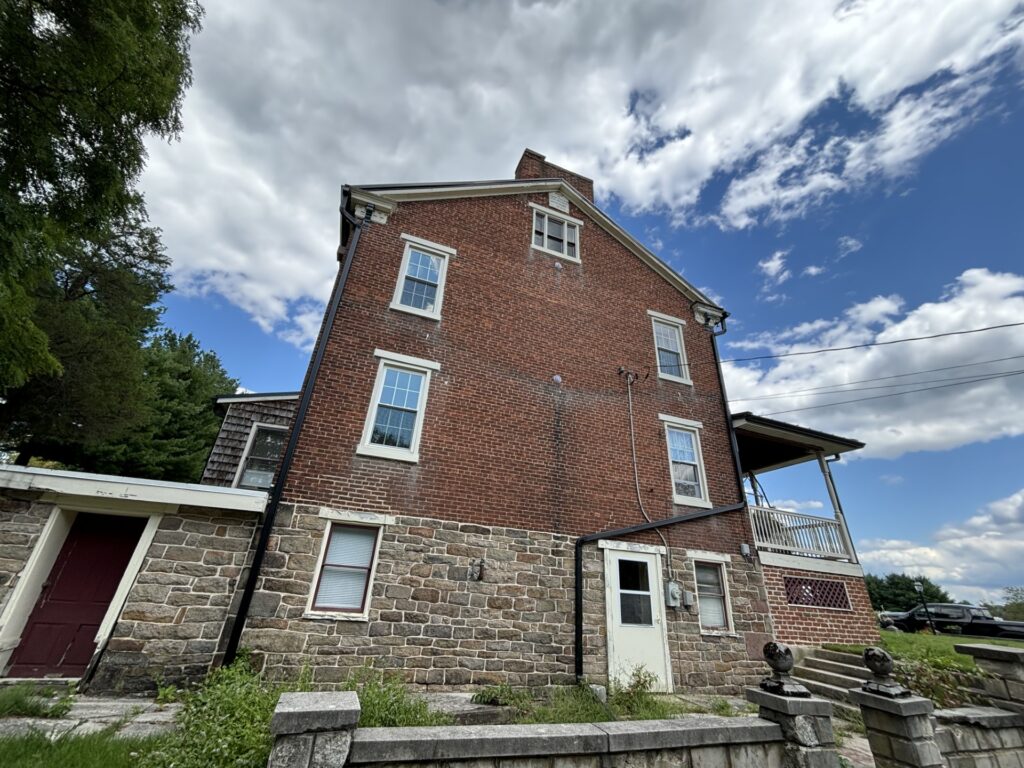
June 27: Carlisle (Jenkins) – Union cavalry defended town. Just before 10 a.m., asst. burgess and citizens emerged from Carlisle’s outskirts carrying a white flag. They informed Jenkins that the cavalrymen had left and no resistance would be made. Jenkins ordered a small detachment to ride into Carlisle and ensure the veracity of the statements. Chief Burgess Andrew Ziegler and several councilmen stood in square to meet the patrol.
June 27: Mechanicsburg (Jenkins) – Jenkins spotted large Union flag over town. Fired artillery warning shot. Rode into town under a white flag. Stopped at Chief Burgess George Hummel’s house and demanded the flag else the town would be shelled immediately. Hummel produced the flag.
The questions
After seeing how other towns handled the advance of the Confederate raiders, do you believe the decision by York’s leaders to seek out the Confederates was justified? Did they deserve criticism – or praise – then? Or now?
Related links: York’s Civil War surrender of 1863: Why it matters (ydr.com), Scott Mingus’ “Flames Beyond Gettysburg,” and James McClure’s “East of Gettysburg.” Photos, Jim McClure.
— By JAMIE KINSLEY and JIM McCLURE

